While new night vision and advanced drones often attract a lot of attention, soldiers know that much of their comfort and survival in training and combat often depends on what they wear.
Everything from boots and weapons to first aid pouches, new bomb suits for explosives specialists and even cold weather gear comes out of Program Executive Office-Soldier.
Such items — whether it’s the Army’s rollout in recent years of its new Greens uniform, a better hot-weather boot, poncho or the beloved “woobie,” a light, nylon blanket that’s provided relief on many an exhausting field exercise — are all part of what soldiers wear.
Army Times spoke with gear experts at PEO Soldier ahead of the Association of the U.S. Army’s Annual Meeting and Exposition about some of the items soldiers wear that are being fielded, developed or improved.
Next Generation Advanced Bomb Suit
The Next Generation Advanced Bomb Suit is the first purpose-built bomb suit built for military explosives ordnance disposal, or EOD, personnel, according to Lt. Col. Ken Elgort, product manager for soldier protective equipment.
The suit not only provides explosion protection but also integrates the Modular Scalable Vest, the service’s newest addition to the body armor inventory, adding ballistic protection from small arms fire and fragmentation munitions such as hand grenades.
Adding body armor and integrating combat helmet protection into the suit increases survivability by 72% for all threats, Elgort said. The suit is also 5% lighter than the previous version.
The new suit allows users to turn around. Previously, due to suit vulnerabilities, technicians had to back away from a device to maintain protection.
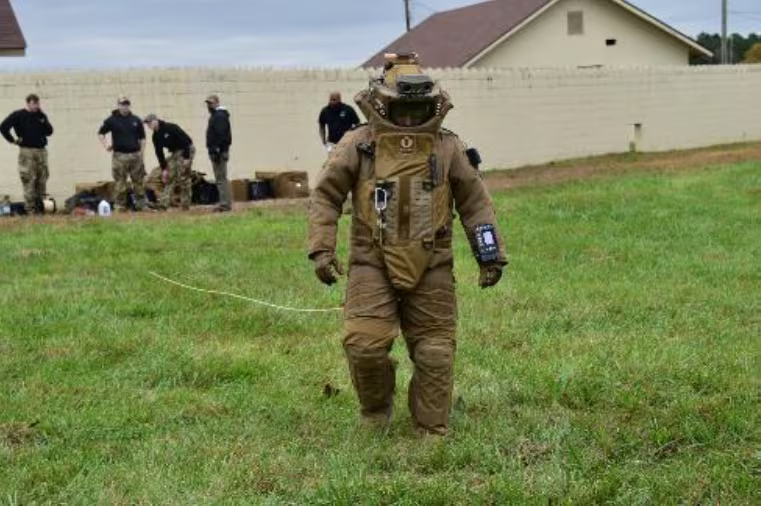
The Army completed first article testing this past summer and is under initial testing for production, Elgort said. Production is slated for early 2025 with a tentative fielding of late 2025 to EOD units.
Beyond the protection aspects, bomb techs will also have built-in sensors and daylight, lowlight and thermal cameras. The cameras can fuse their images together in the user’s view, allowing them to see what they’re facing in detail.
With those views, technicians have more flexibility to work on explosive threats in the dark, Elgort said. The recording ability allows soldiers to bring back visual details of a potential threat and have other technicians help troubleshoot how to neutralize it.
Experts did not specify how many suits the Army expects to deliver.
Modular Scalable Vest
The Army has fielded 80,000 Modular Scalable Vests, or MSVs, in recent years and expects to continue fielding this new body armor through mid-fiscal 2028, officials said.
The vest’s scalable aspects emerged from lessons learned in Afghanistan, Elgort said. The new system allows commanders to assess the threat level in their area and either add protection or responsibly lower the number of items needed.
The entire system includes body armor, vest, ballistic combat shirt, helmet, pelvic protector and eyewear.
The vest and carrier alone weigh 25 pounds, which is 5 pounds lighter than its predecessor in the same configuration, the Improved Outer Tactical Vest, Elgort said.
The MSV added three sizes to the existing five options at the time, providing a better fit for smaller-framed male and female soldiers who previously had to adjust ill-fitting body armor. Some of the features specific to female soldiers include better side chest protection and a notch cut in the collar to accommodate longer hair.
The initial fielding focused on close combat forces such as infantry, engineers, combat vehicle crewmen, field artillery, armor, military police, medics and soldiers in Army Special Operations Command and Security Force Assistance Brigades.
Last year, PEO Soldier began fielding the MSV Generation II to military police. The second-generation version further lightened the body armor, and the carrier is colored black instead of camouflage.
Next Generation Integrated Head Protection System
Earlier this year, the service began fielding the Next Generation Integrated Head Protection System, or IHPS, which offers more protection at the same weight as the original IHPS.
Paratroopers with the 82nd Airborne Division out of Fort Liberty, North Carolina, were the first to receive the 3.27-pound helmet.
The older version of IHPS began fielding in 2018 to replace the Advanced Combat Helmet and the Enhanced Combat Helmet for close combat units, Army Times previously reported.
The improved protection comes from new materials used in making the helmet shell. The previous version required soldiers to add an applique, a kind of bolt-on extra layer of protection. However, while the applique increased the types of threats the helmet could withstand from small arms to rifle rounds, it also added 2.5 pounds.
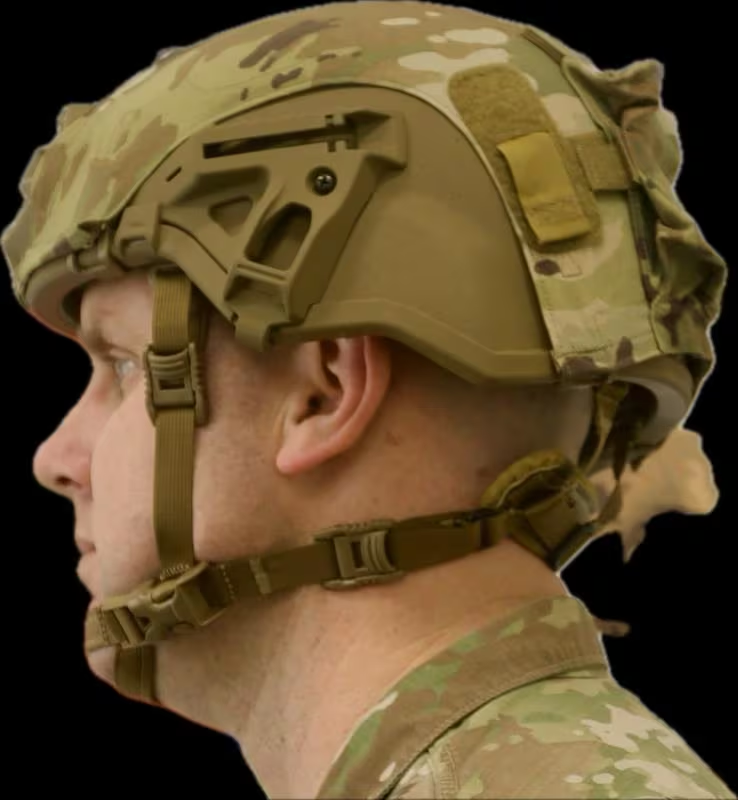
Maj. Matthew Carter, assistant program manager-head protection, said the focus now is testing a variety of pads for the helmet’s interior in an effort to improve both comfort and protection. Soldiers are more likely to wear their gear when it fits well — and wearing that gear correctly helps them stay protected.
Once testing concludes, the Army plans to offer two different pad options for soldiers to choose from when assembling their helmet, Carter said.
First aid kit pouch and grenade launcher holster
In one example of how changing one part of kit can affect the entire setup, the Army is reconfiguring necessary combat accessories for soldiers who carry its newest rifle or machine gun.
PEO Soldier has redesigned the Individual First Aid Kit, or IFAK, pouch to a more vertical, slimmer design. The Next Generation Squad Weapon XM 7 rifle and XM250 automatic rifle both fire the 6.8mm round, a new caliber not used before in U.S. military units. The different ammo pouches mean there’s less space to store kit.
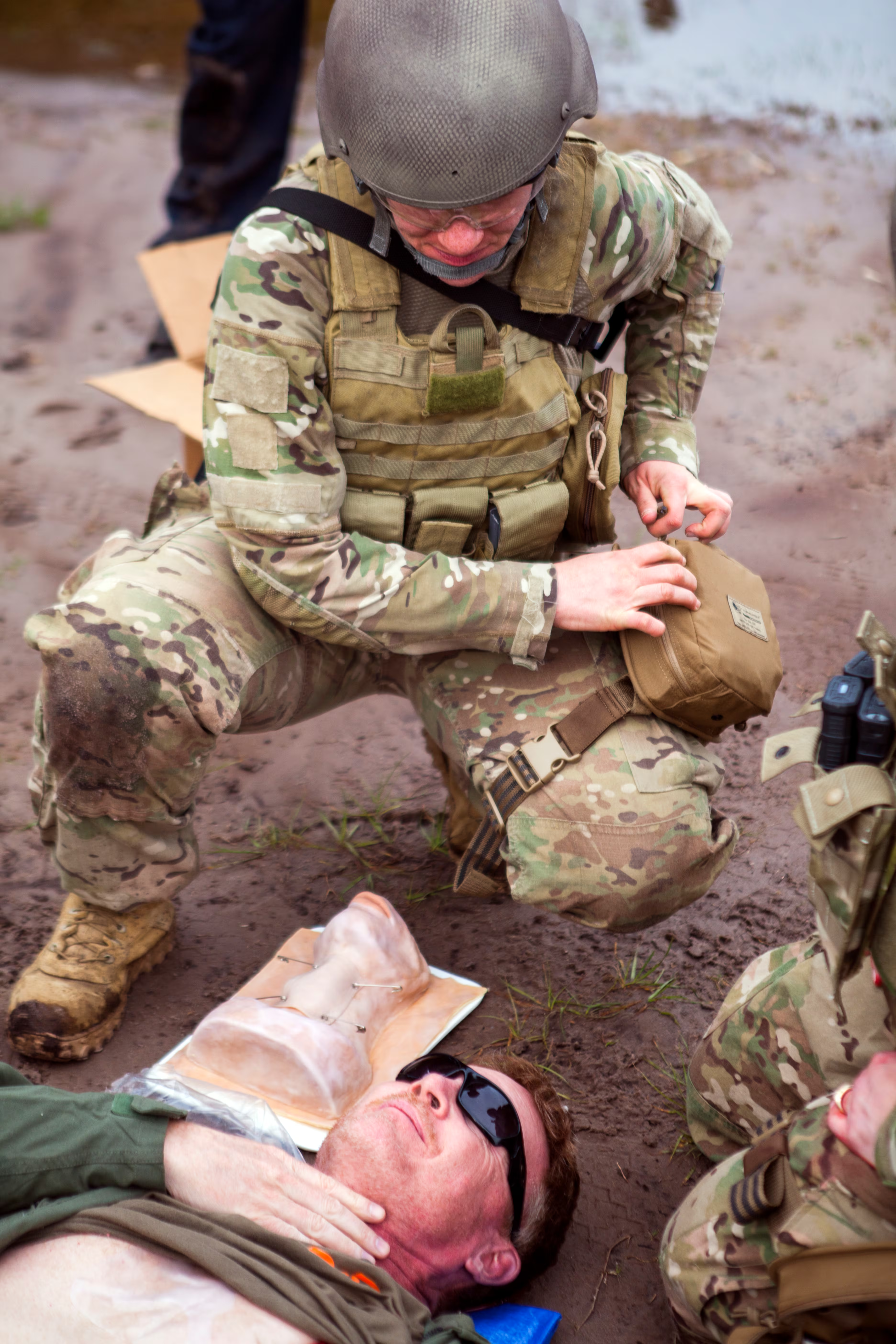
The Army is fielding the new IFAK carrier along with the NGSW weapons; that effort began in March and so far, has seen 1,478 narrow IFAKs fielded, officials said. All close combat forces will receive the narrow IFAK in future deliveries, officials said.
Further, more soldiers now carry the M320 grenade launcher, rather than the previous M203, which was attached under the barrel of the M16.
The standalone 40mm grenade launcher needs to go somewhere — that somewhere is a new holster that grenadiers can affix to their gear and store the weapon for quick retrieval.
The holster is being fielded with the M320 grenade launchers to close combat units. So far, 162 holsters have reached soldiers. The Army expects to field 14,617 holsters.
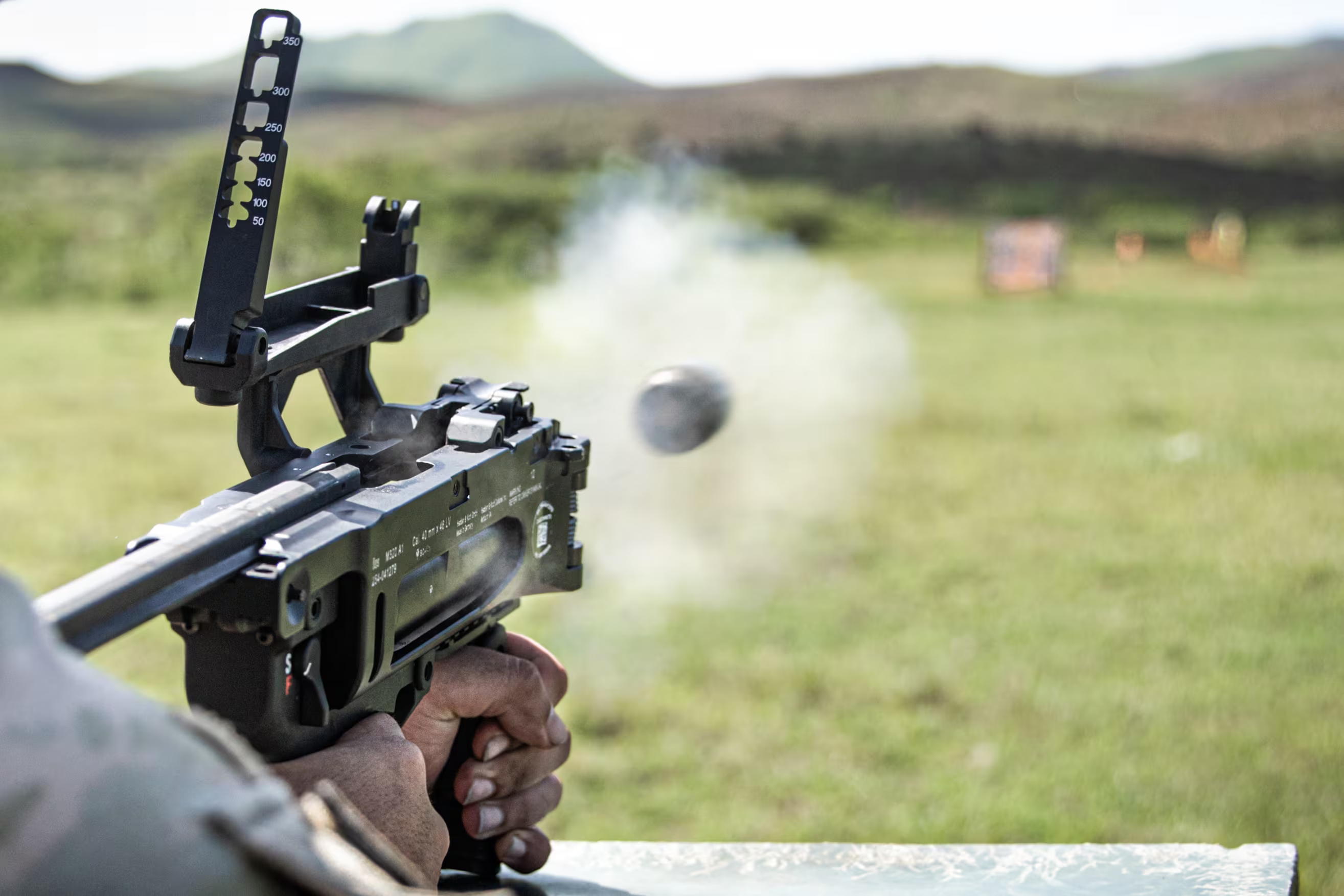
Parachutes
The Army currently has a variety of parachutes for its airborne soldiers, with the T-11, MC-6 static line and RA-1 free fall parachutes among the common options.
While the Ram Air-1, or RA-1, began fielding in 2015 and has seen more than 4,000 sent to soldiers, the life cycle replacement begins in fiscal 2026, said Maj. Ryan Cermely, assistant program manager for the personnel airdrop team.
But the Army’s also doing something different with the free fall chute: It’s giving jumpmasters and riggers the option to have it for static line use and free fall.
“This provides a larger standoff for infiltration to their insertion point,” Cermely said.
The service is improving the RA-1 as it replaces the aging chutes in the life cycle plan, including additional canopy lines for better control.
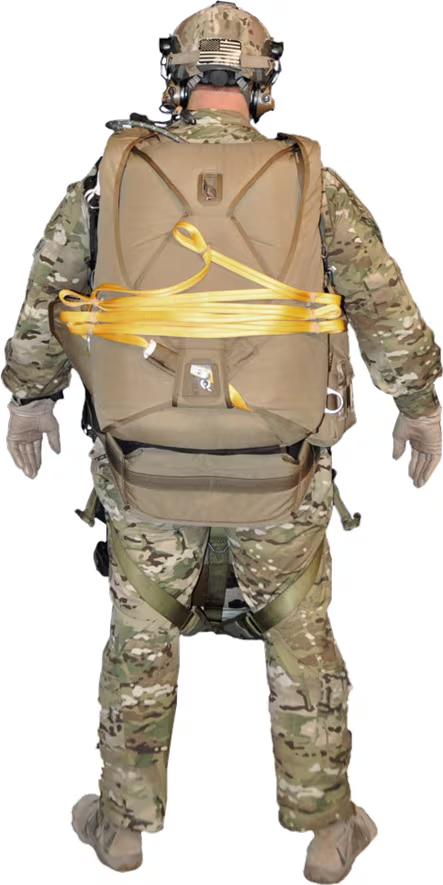
Developers are also working to improve the canopy. Those adjustments will give users a much more precise glide ratio, which is used to determine the distance a paratrooper will fall in relation to how far forward they’re moving.
Current glide ratios are 4:1, which means that for every 4 meters a paratrooper goes forward, they fall 1 meter.
But the new design expects to achieve a 1.5:1 ratio. That would mean for every 1.5 meters a paratrooper goes forward, they would fall 1 meter, Cermely said.
This allows paratroopers to form tighter “stacks” as they descend and land closer together on the ground, cutting down the dangerous period of time when paratroopers are gathering their gear and rallying as a unit following a drop.
Air crew safety
The Army is upgrading aviation crews’ survival gear to keep them safe on flights, as the service expects its aviation crews to fly farther and more often in any future battle scenario.
The new Air Crew Combat Equipment, or ACE, vest integrates the MSV body armor soft and hard plates into the crew equipment vest.
Developers trimmed nearly 10 pounds from the 30-pound load carrier and reduced the overall system’s bulk by 15%.
The vest system also comes with several tether straps for users to attach themselves to the inside of a helicopter.
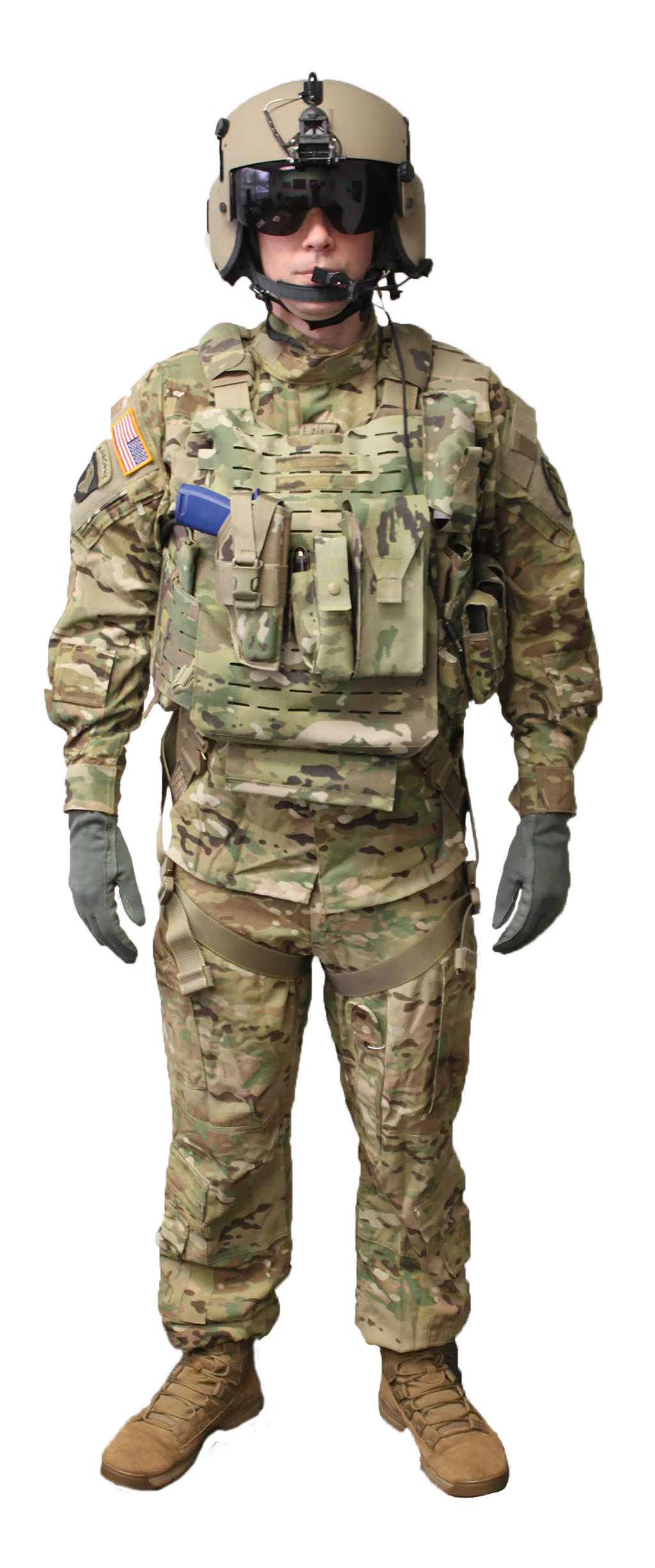
They’ve lightened the carabiners and built in a 10,000-pound rated capacity for the straps that users use to attach the devices, officials said.
A new life preserver is also part of the system. It’s been moved from under the head in the old system to under the armpits in an effort to keep more of the soldier above water should the aircraft have a water landing.
Last year, PEO Soldier fielded 150 ACE vests with the new life preservers to the 25th Combat Aviation Brigade in Hawaii. Plans call for another 18,000 vests to go to the other 11 combat aviation brigades in the Army over the next eight years.
Todd South has written about crime, courts, government and the military for multiple publications since 2004 and was named a 2014 Pulitzer finalist for a co-written project on witness intimidation. Todd is a Marine veteran of the Iraq War.







